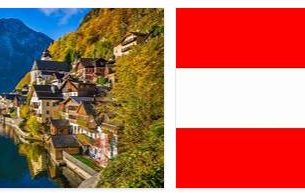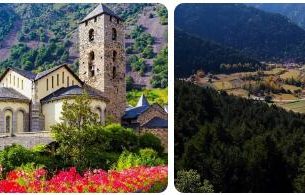Bosnia-Herzegovina – one state since 1995
This part of the former Yugoslavia entered the consciousness of the world public in a particularly tragic way when in July 1995 over 8,000 Muslim men and women in Srebrenica were kidnapped and murdered by Serbian mercenaries. The military command was General Ratko Mladic b. 1942). The political responsibility of the psychiatrist Radovan Karadzic (born 1945). Both were sentenced to life imprisonment by the International Criminal Tribunal for the Former Yugoslavia (also known as the UN War Crimes Tribunal).
It was particularly tragic that the area was under the protection of the UN and should be protected by about 500 Dutch blue helmet soldiers. The pictures of the Dutch UN commander, Lieutenant Colonel Ton Karremans, who drinks champagne with the war criminal Mladic, went around the world. But as in Somalia, Rwanda or Sudan (Darfur), the UN was criticized for not being able to protect the people entrusted to it. The UN made a number of very clever resolutions.
There has been a lot of thought about the term “genocide”. In addition, UN Secretary General Kofi Annan was deeply concerned. However, in autumn 2006, one of the largest Dutch law firms filed a lawsuit against the Netherlands and the UN on behalf of 7,930 survivors. It is also about billions in damages. A great satisfaction – and not only for the people in Bosnia-Herzegovina – was the arrest of the person primarily responsible for the murder of around 8,000 people in Srebrenica – Radovan Karadžić (born 1945) in July 2008.
| Name of the country | Republic of Bosnia and Herzegovina/Bosna i Hercegovin |
| Form of government | Federal Republic |
| Geographical location | from around 42º to 46º north latitudefrom around 15º to 20º east longitude |
| National anthem | Intermeco, a hymn without lyrics |
| Independence | Proclamation of the Republic of Bosnia and Herzegovina on March 3rd, 1992Recognition by the EU and the USA on March 6th/7th. April 1992 |
| Population | approx. 3.7 million (Credit: Countryaah: Bosnia and Herzegovina) |
| Ethnicities | approx. 47% Bosniaks, 36% Serbs, 12% Croatians, 5% others.Minorities: Montenegrins, Albanians, Slovenes, Macedonians, Turks, Roma and others |
| Religions | 48% Muslims, 34% Serbian Orthodox, 15.4% Catholics |
| Languages | Bosnian, Croatian, Serbian.After the fall of Yugoslavia, the various “dialects” were recognized as their own languages. |
| Capital | Sarajevo with around 400,000 residents |
| Surface | 51,129 km² |
| Highest mountain | Maglic with a height of 2,386 m |
| Longest river | Sava (Save) with a length of 945 kmAfter the tributary of the Una it forms the border between Bosnia and Herzegovina and Croatia.
It flows into the Danube near Belgrade. |
| Largest lake | Busko with an area of 8,300 km² |
| International license plate | BIH |
| National currency | convertible mark (KM/BAM)/since June 1998 |
| Time difference to CET | = CET |
| International phone code | 00387 |
| Mains voltage, frequency | 220 volts, 50 hertz |
| Top Level Domain (TLD) | .ba |
Bosnia and Herzegovina: history
Before the year 1000
Antiquity
Bosnia and Herzegovina belonged to the Roman province of Dalmatia. It was considered an important country for trade as it is conveniently located between the Adriatic and the Danube.
7th century
According to Abbreviationfinder website, Serbs and Croats immigrate to Bosnia and Herzegovina. However, it remained dependent on Byzantium despite the Slavic immigrants.
925
Formation of the Croatian kingdom with the coronation of the Croatian prince Tomislav as king. The area of today’s Bosnia and Herzegovina belonged to the Croatian Kingdom.
From the year 1000 to the 17th century
12th – 15th century.
The name Bosnia appeared for the first time in the Bosnian principality of Ban Kulin. It covered the central part of today’s Bosnia around Sarajevo. It remained a principality for a few hundred years and later (1377) became a kingdom.
15th century.
The population of Bosnia was about 800,000 people
1463
Bosnia was conquered by the Ottomans and became an Ottoman province. The Bosnian nobility and some minorities converted to Islam.
1481
Herzegovina was ruled by the Ottomans.
1580
Bosnia and Herzegovina were united to a “Paschalik” (administrative district of a pasha) in the Ottoman Empire.
16th-17th centuries.
A particularly strong wave of Islamization hit the country.
In the 18th and 19th centuries
1839
The previous self-government of Bosnia was dissolved after there were uprisings against the Turkish occupiers.
1878
Bosnia and Herzegovina were subordinated to Austria-Hungary as a result of the Berlin Congress, but remained under the government of the Sultan until 1908. The term Bosnia-Herzegovina was introduced.
20th century
1908
Bosnia-Herzegovina was annexed by Austria-Hungary, which increased popular resistance.
1912/13
Balkan Wars: Serbia wanted in vain to expand its influence on Bosnia-Herzegovina.
June 28, 1914 On June 28, 1914 the Austro-Hungarian heir to the throne, Franz Ferdinand and his wife, were murdered by the Serbian nationalist Gavrilo Princip in Sarajevo (beginning of World War I).
1918
The Austro-Hungarian monarchy disintegrated and a “Kingdom of Serbs, Croats and Slovenes” emerged with the capital Belgrade. Bosnia-Herzegovina also became part of this kingdom under the rule of the Serbian heir to the throne Alexander Karadordevic.
1929
The Kingdom of Serbs, Croats and Slovenes became the Kingdom of Yugoslavia.
1939
With the so-called “Sporazum”, Serbs and Croats decided to divide the area of Bosnia-Herzegovina into Serbian and Croatian-dominated banks (Banovinas).
1941
That year German and Italian troops occupy Yugoslavia. Bosnia and Herzegovina are incorporated into the fascist “Independent State of Croatia”, which is dependent on Germany.
11/25/1945
On 11/25/1945, the “People’s Republic of Bosnia and Herzegovina” (NRBiH) was formed with today’s borders.
November 29, 1945
The “Federal People’s Republic of Yugoslavia” (FNRY) was proclaimed.
1946
In 1946, Bosnia-Herzegovina was incorporated into the People’s Republic of Yugoslavia as a state.
1963
D should be i.e. BiH constitution was amended to the Muslims that for the first time as a separate “people” register.
1971
In 1971 about 800,000 Muslims registered as “Muslims of one nation” and thus made use of the new law.
1974
The new federal and republic constitutions of Yugoslavia showed strong tendencies towards decentralization/federalization.
May 4th, 1980 Marshal Tito died on May 4th, 1980.
1990
First democratic elections in which nationally oriented parties came to power in most of the republics and the breakup of Yugoslavia was announced.
Summer 1991
The Republic of Yugoslavia fell apart.
01.03.1992
In a referendum, the majority of Bosnian Muslims and Croats were in favor of independence from Yugoslavia. The Serbian ethnic group boycotted the vote. Thereupon Bosnia declared itself independent. The Bosnian Serbs proclaimed their own republic and, with the support of Yugoslavia, tried to take large parts of Bosnia militarily. A year later, the Bosnian Croatia did the same and wanted to force the country over to Croatia.
06.04.1992
D i.e. Republic of Bosnia and Herzegovina was the EU Member States officially recognized by the US and the.
April 1992
In April 1992 the war in Bosnia-Herzegovina began between the ethnic groups. So-called “ethnic cleansing” began.
03/18/1994
On 03/18/1994 the Bosniaks and the Croats signed in Washington the treaty to form a “Federation of Bosnia and Herzegovina”.
07/11/1995
Serbian troops under the command of General Ratko Mladic marched into Srebenica and murdered around 8,000 male residents. 30,000 residents were displaced. There has not been such a massacre of civilians or genocide in Europe since the Second World War.
December 14, 1995: The Dayton Peace Agreement was signed in Paris and the war ended. Bosnia-Herzegovina became a unified and politically independent state (BiH), which consists of the Federation of Bosnia and Herzegovina and the Serbian Republic (Republika Srpska).
July 2008
A great satisfaction – and not only for the people in Bosnia-Herzegovina – was the arrest of the person primarily responsible for the murder of around 8,000 people in Srebrenica – Radovan Karadžić (born 1945) in July 2008.
May 2011
On May 26th, Ratko Mladic (born 1942) was arrested in Serbia. As a Bosnian-Serb general he was responsible for the almost four-year siege of Sarajevo and the massacre of Srebrenica in July 1995. On May 31, 2011, he was transferred by plane to the War Crimes Tribunal in The Hague. At the time of his arrest, he was suffering from complications from a stroke and heart attack. There was nothing left of the robust general who had risen to rule over life and death.



